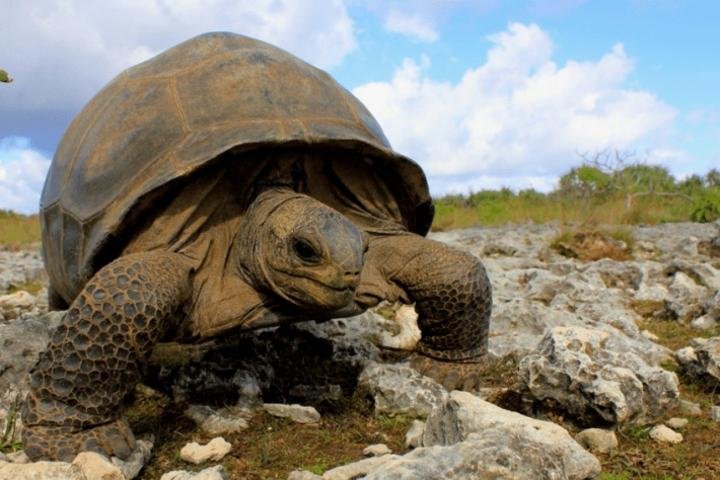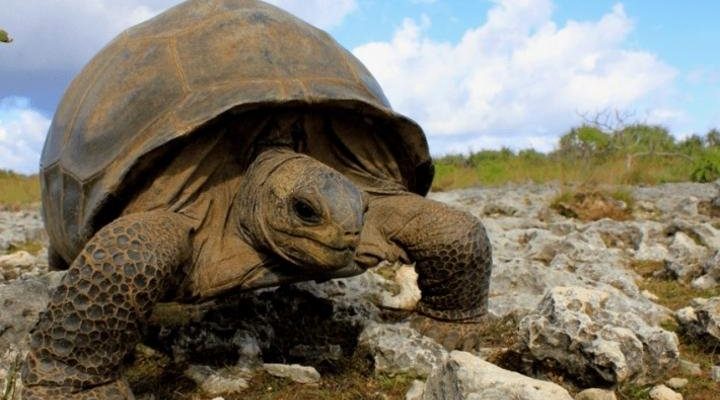
The Aldabra giant tortoise has been a symbol of conservation efforts, and their status brings both hope and concern. Throughout this article, we’ll dive deep into whether the Aldabra giant tortoise is endangered, exploring the various factors that affect their survival and the global conservation efforts aimed at protecting these magnificent creatures. Buckle up, because we’re about to take a closer look at conservation insights!
The Current Status of the Aldabra Giant Tortoise
The Aldabra giant tortoise is classified as a vulnerable species by the International Union for Conservation of Nature (IUCN). This classification indicates that they face a high risk of extinction in the wild if certain conditions don’t improve. But here’s the kicker: unlike some other tortoise species that are on the brink of extinction, the Aldabra giant tortoise population is relatively stable. Estimates suggest there are around 100,000 individuals roaming the Aldabra Atoll, thanks in large part to successful conservation efforts.
What’s fascinating is how these tortoises have adapted to their environment. Their tough, domed shells protect them from predators, and their ability to go without food for long periods means they can survive harsh conditions. However, it’s essential to keep a close eye on their populations because the delicate ecosystems they inhabit are constantly evolving.
Threats Facing the Aldabra Giant Tortoise
Even with their current numbers, the Aldabra giant tortoise still faces several threats that could jeopardize its future. Here are some key dangers:
- Climate Change: Rising sea levels and changing weather patterns could impact the Aldabra Atoll, disrupting the habitat these tortoises rely on.
- Invasive Species: Animals like rats and goats can threaten tortoise eggs and compete for food resources, which poses a significant risk.
- Human Activity: While the Aldabra Atoll is a protected area, human activities like tourism and development can still affect their habitat.
Honestly, it’s a balancing act. While conservation efforts have made a significant impact, these ongoing threats remind us that vigilance is crucial for the Aldabra giant tortoise’s survival. As we look at these issues, it becomes clear that protecting them isn’t just about saving a species; it’s about preserving an entire ecosystem.
Conservation Efforts in Place
Various organizations and governments are working tirelessly to protect the Aldabra giant tortoise. One key player is the Seychelles Islands Foundation, which manages the Aldabra Atoll and ensures it’s a safe haven for these tortoises. They implement several strategies, such as:
- Monitoring Populations: Regular surveys help track tortoise numbers and health, ensuring any decline can be addressed quickly.
- Habitat Protection: Legal protections prevent habitat destruction, promoting the natural growth of vegetation that the tortoises rely on for food.
- Restoration Projects: Efforts to remove invasive species are underway, helping to reclaim the tortoise’s natural habitat.
These initiatives are not just about numbers—they’re about creating a sustainable environment for all species on Aldabra Island. By focusing on collaboration and scientific research, these organizations are making significant strides in tortoise conservation.
The Role of Ecotourism
You might be surprised to learn that ecotourism plays a vital role in the conservation of the Aldabra giant tortoise. When managed properly, tourism can provide much-needed funding for conservation projects and raise awareness about these magnificent creatures. Here’s how it works:
- Funding Conservation Efforts: Entry fees and donations from tourists help finance habitat protection and research projects.
- Educating Visitors: Tours and educational programs inform tourists about the importance of protecting the Aldabra giant tortoise and its ecosystem.
- Community Engagement: Local communities can benefit economically from tourism, which encourages them to protect the tortoise rather than exploit its natural habitat.
When people experience the beauty of these tortoises firsthand, they often develop a deeper appreciation for wildlife conservation. This connection can be powerful in driving both local and global efforts to protect endangered species.
Future Prospects for the Aldabra Giant Tortoise
Looking ahead, the future of the Aldabra giant tortoise isn’t set in stone. With ongoing conservation efforts and increasing awareness, there’s hope for a brighter tomorrow. However, consistent monitoring and proactive measures will be essential.
You might be wondering, what can individuals do to help? Simple actions, like supporting wildlife conservation organizations or spreading awareness about endangered species, can make a difference. Even small contributions can have a big impact when combined with larger efforts.
As we move into a world where climate change presents more challenges, the resilience of the Aldabra giant tortoise will be tested. But with continued commitment and action, we can ensure these remarkable creatures thrive for generations to come.
In summary, while the Aldabra giant tortoise isn’t currently classified as endangered, it still faces several threats that need to be addressed. Conservation efforts are in place, and thanks to organizations and ecotourism, there’s a roadmap for preserving their future.
Ultimately, the story of the Aldabra giant tortoise is about more than just one species; it reflects our responsibility to protect the delicate balance of nature. By understanding the challenges they face and the efforts to safeguard their populations, we become part of the solution. So, let’s continue to promote awareness and take action, ensuring these magnificent tortoises continue to roam the shores of Aldabra for many more years to come.

